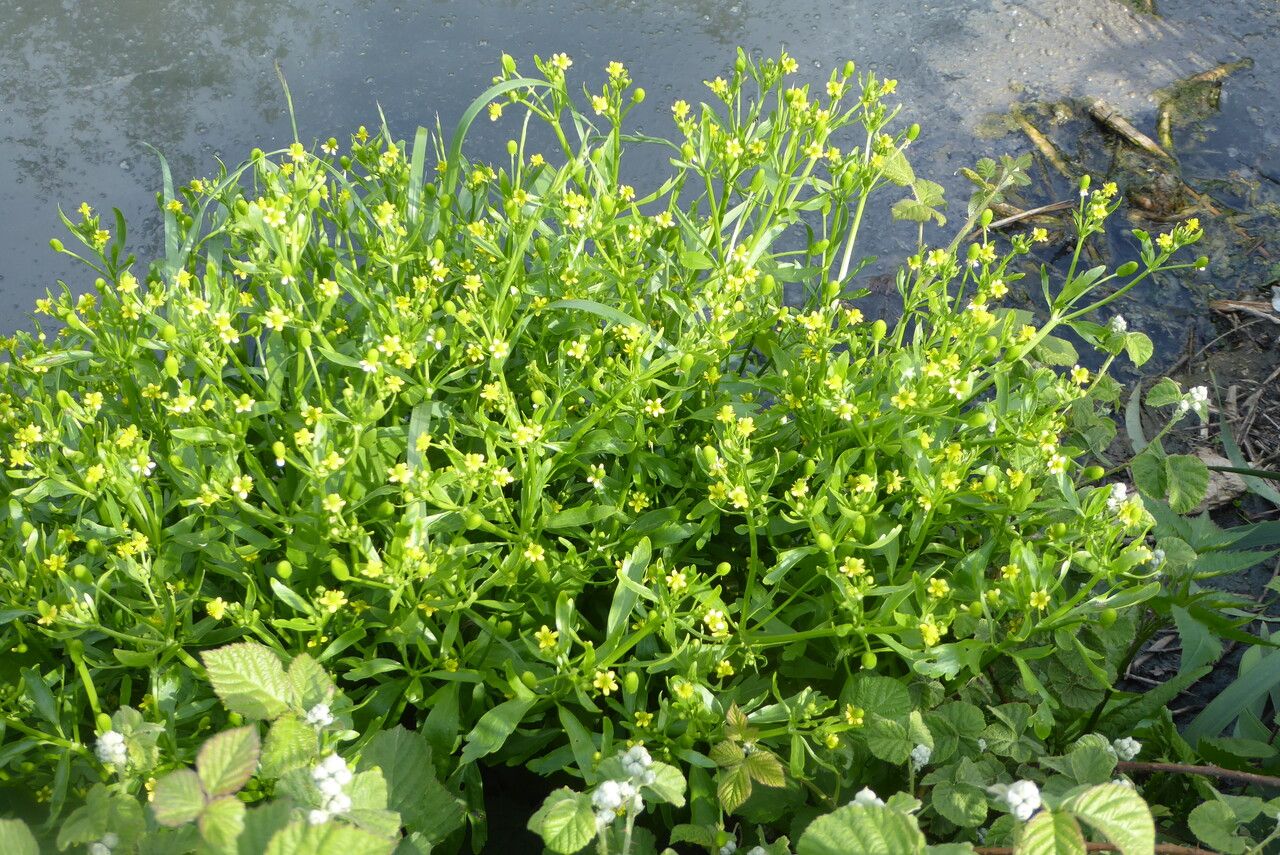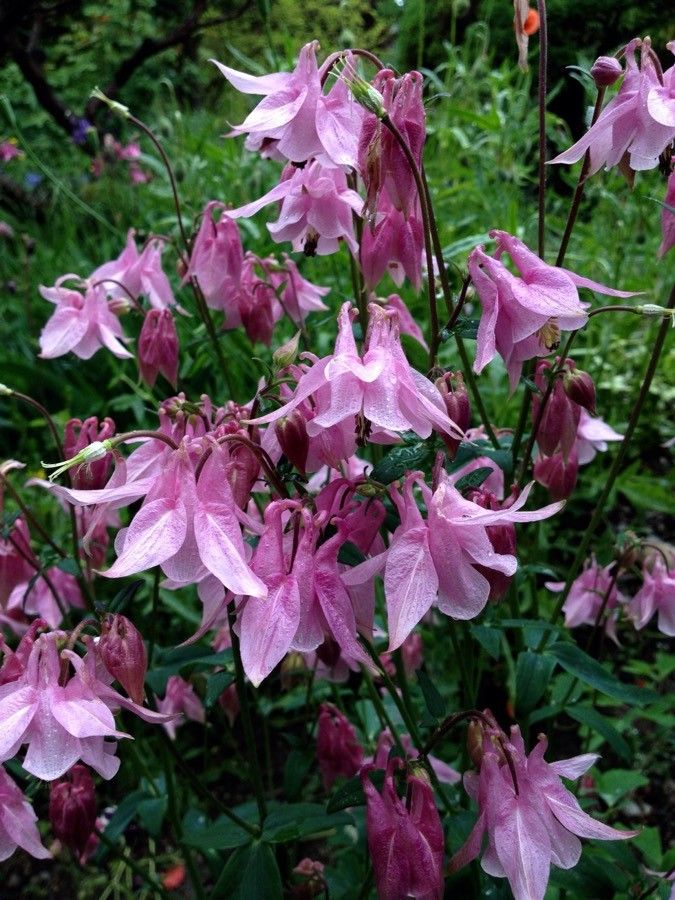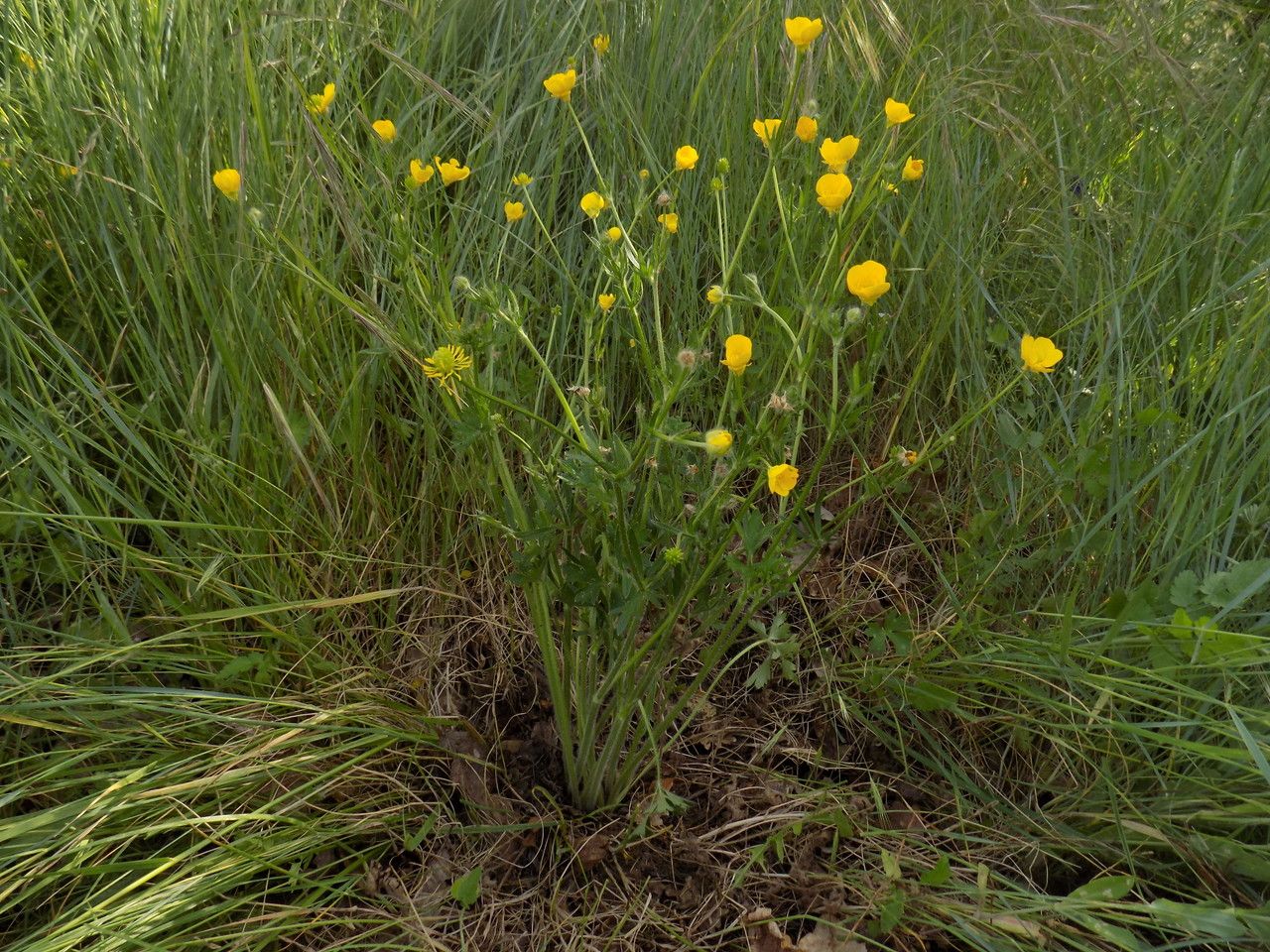### Celery Buttercup: A Comprehensive Guide to *Ranunculus bulbosus*
The Celery Buttercup (*Ranunculus bulbosus*), a vibrant member of the Ranunculaceae family, is a captivating wildflower known for its bright yellow, cup-shaped blooms and distinctive, celery-scented foliage. While often found thriving in wild meadows and pastures, this hardy plant can also be a delightful addition to your garden, provided you understand its specific needs.
### Habitat and Growth
Celery Buttercups are native to Europe and parts of Asia and North Africa. They prefer full sun to partial shade and thrive in well-drained soils, ranging from sandy to loamy. These plants are highly adaptable, tolerating a variety of soil conditions, but consistently moist soils should be avoided, as they can lead to root rot. They typically grow to a height of 10-30cm (4-12 inches), forming clumps of erect stems with deeply lobed, celery-like leaves. The striking golden-yellow flowers, usually solitary, appear from spring to early summer. Their bulbous roots are essential for survival, providing nutrients and enabling them to endure periods of drought.
### Planting and Care
Celery Buttercups are easily propagated by seed or by dividing the bulbous roots in autumn or early spring. Sow seeds directly into the prepared soil in autumn or early spring, lightly covering them with soil. Keep the soil moist until germination occurs. When planting bulbs, ensure sufficient spacing between them to accommodate growth. Regular weeding is crucial, particularly during the early stages of growth. While relatively low-maintenance, these plants benefit from occasional watering, especially during dry periods. However, overwatering should be strictly avoided. Deadheading spent flowers encourages continued blooming and prevents the plant from expending energy on seed production.
### Toxicity and Uses
It's important to note that all parts of the Celery Buttercup are considered toxic if ingested. The plant contains ranunculin, a glycoside that can cause irritation and blistering of the mouth and digestive system. Therefore, handle with care and keep away from children and pets. Historically, the plant has been used in traditional medicine, but its toxicity necessitates professional guidance and should not be attempted without expert supervision. It is primarily cultivated for its ornamental value and is best appreciated as a visually appealing addition to wildflower meadows or naturalistic gardens.
### Celery Buttercup in Your Garden
With its vibrant blooms and distinctive foliage, the Celery Buttercup offers a unique and attractive element to gardens that embrace a more naturalistic approach. Its tolerance for various conditions makes it a relatively undemanding plant, requiring minimal maintenance. Remember to select a location with well-drained soil and ample sunlight for optimal growth. Incorporating Celery Buttercups into meadows, rock gardens, or as borders can add a touch of wild beauty to your landscape.
### Conclusion
The Celery Buttercup, with its charming yellow flowers and interesting foliage, presents a delightful addition to gardens and landscapes. Its unique qualities make it a worthwhile plant to learn about and appreciate, reminding us of the diversity and beauty found within the wildflower kingdom. Always remember to handle the plant with care due to its toxicity.
Celery Buttercup: Ranunculus bulbosus Guide

Frequently Asked Questions
How do I care for a Celery Buttercup?
Celery Buttercups need well-drained soil and full sun to partial shade. Water regularly, especially during dry spells, but avoid overwatering. Weed regularly and deadhead spent flowers to encourage continued blooming.
Is Celery Buttercup poisonous to humans?
Yes, all parts of the Celery Buttercup are toxic if ingested. It contains ranunculin, which can cause irritation and blistering. Keep it away from children and pets.


